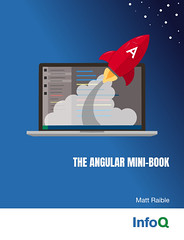Upgraded to Roller 3.1-rc3
This site is now running Roller 3.1-rc3. It took me a few hours to upgrade my theme yesterday, but everything appears to be working correctly. Let me know if you see anything that's out of whack. The only thing I don't like so far is how it displays "Main | Next page »" on the main page. I'd rather it not show anything, but this macro is needed to show next/previous links when browsing by date, individual entries, or search results. If nothing else, it seems to me like it should display "« Previous page | Main" since » implies forward in time.
I did make one enhancement to this theme. Now, the colors for the category is shown when viewing a single entry. Before, the colors where only shown when you were viewing a particular category. The new $model objects make this pretty easy to do. Another feature I really like is the "Full Preview" feature. Rather than just previewing the entry in the author screen, you preview how it will actually look with your theme. Just remember to click on Save as Draft before Full Preview or you'll lose your post!
Update: It looks like I spoke too soon when I said everything is working correctly. I'm currently experiencing some feed duplication and category issues. Sorry about that.


